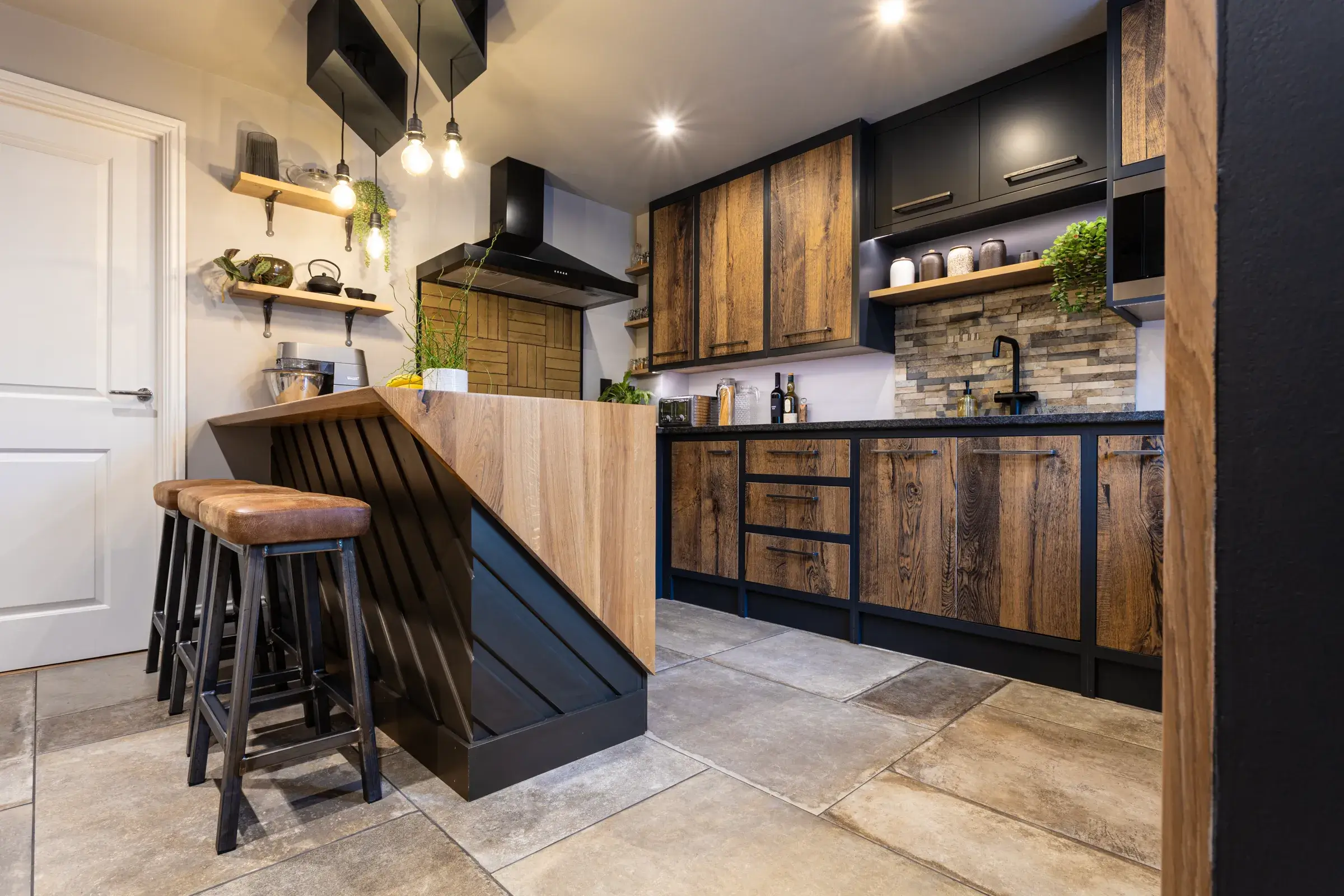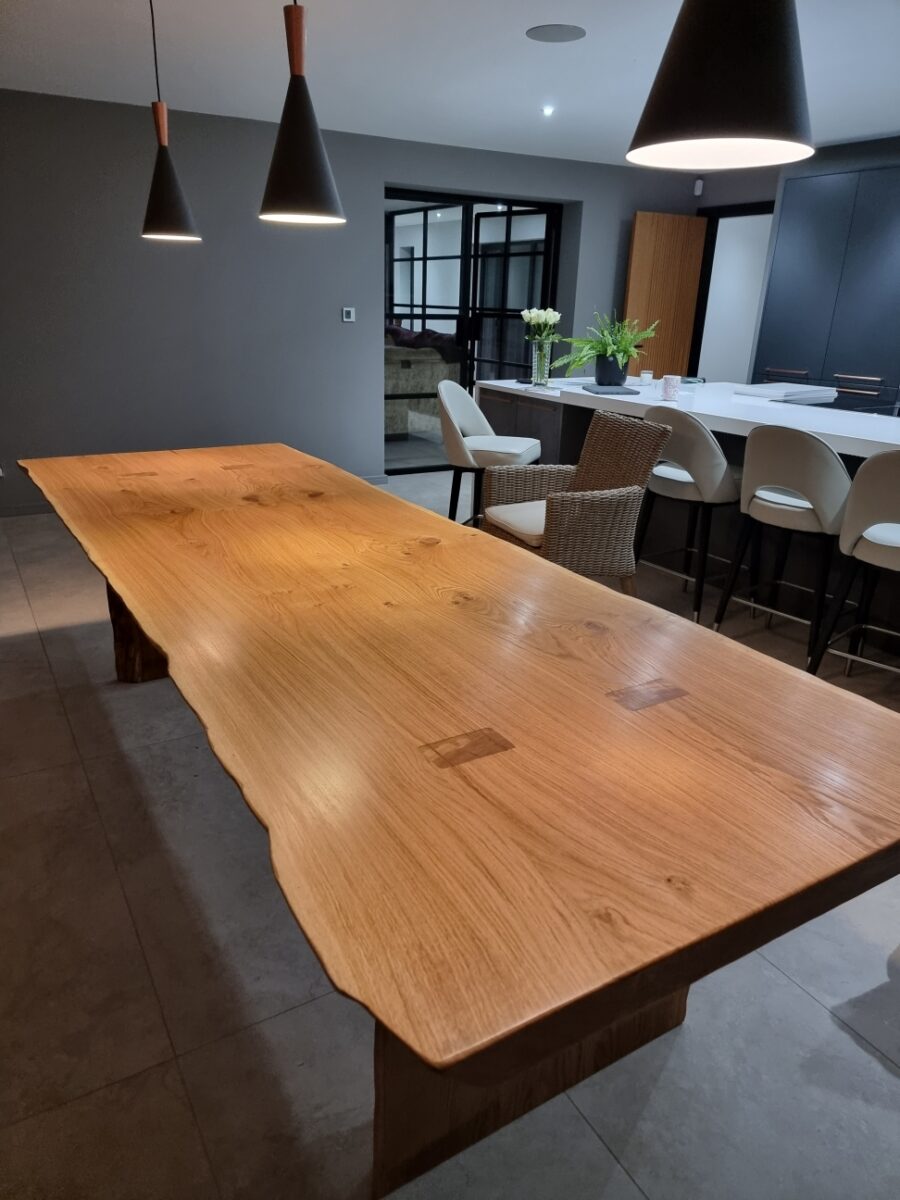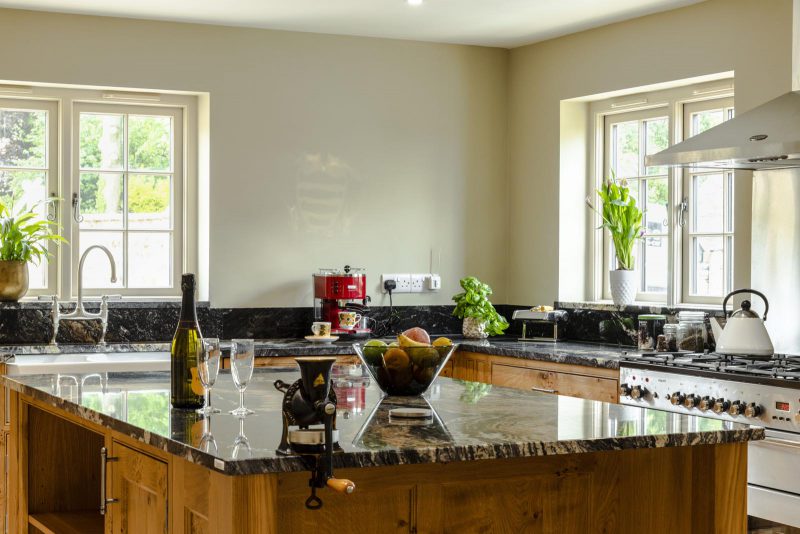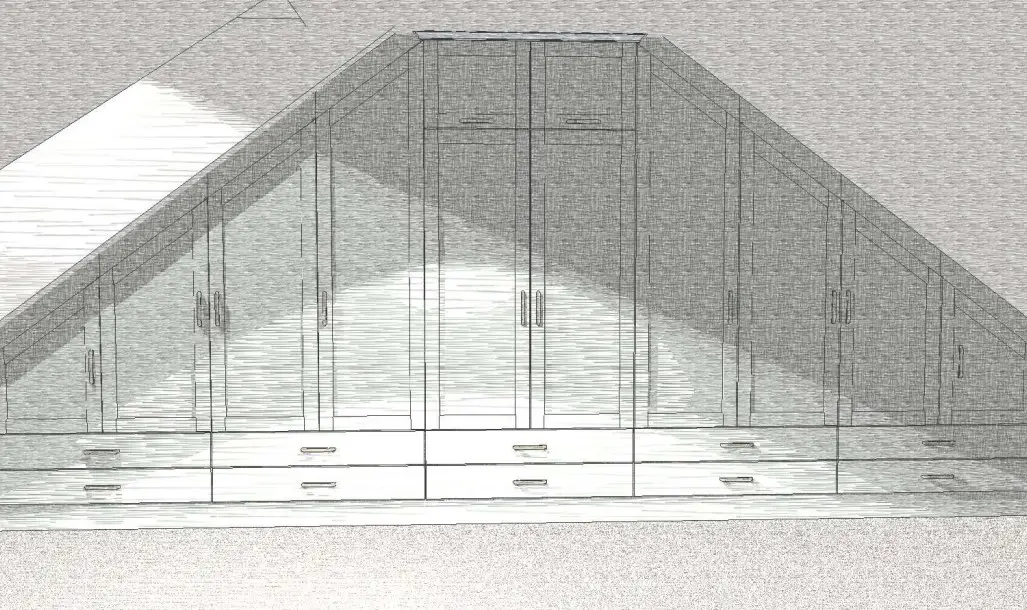Industrial kitchens are no longer reserved for restaurants and stylish lounges. The contemporary styling of industrial kitchens is being embraced in homes across the country as homeowners look for textural elements paired with moody, dark colour schemes. A modern alternative to traditional shaker or frameless kitchen cabinets, industrial kitchens offer a laid-back vibe conducive to casual living. Learn more about industrial kitchen design, and if it’s right for your home.
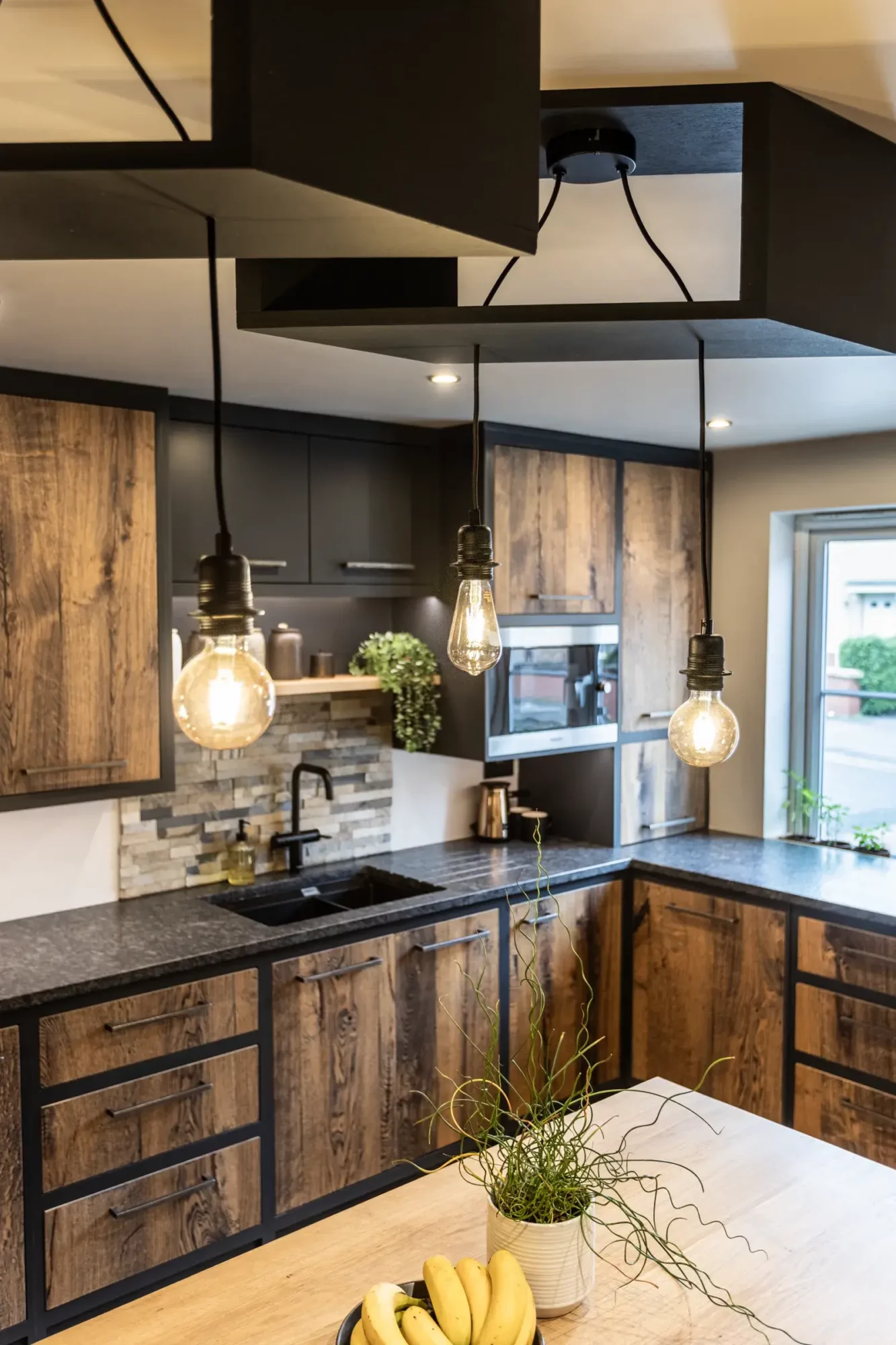
Design Elements of an Industrial Kitchen
While each industrial kitchen will vary, there are common design elements that are repeated to give a signature, cohesive look that embodies the style. Industrial kitchens combine the warmth of natural elements with the edgy sophistication of dark metals, honed stones, and leathered worktops. They are often inspired by masculine colour palettes that integrate browns, grays, and blacks.
Distressed Wood
The use of distressed wood provides the largest scale design element as it is applied to cabinet doors. When designing the Malton kitchen, we used distinctively distressed sheets for the cabinet doors. A distressed finish shows off the wood’s natural grain and character while also acting as a forgiving surface that ages well. The usual dings and nicks that might show up in a painted or stained cabinet are often hidden in the distressed finish and add more character over time.
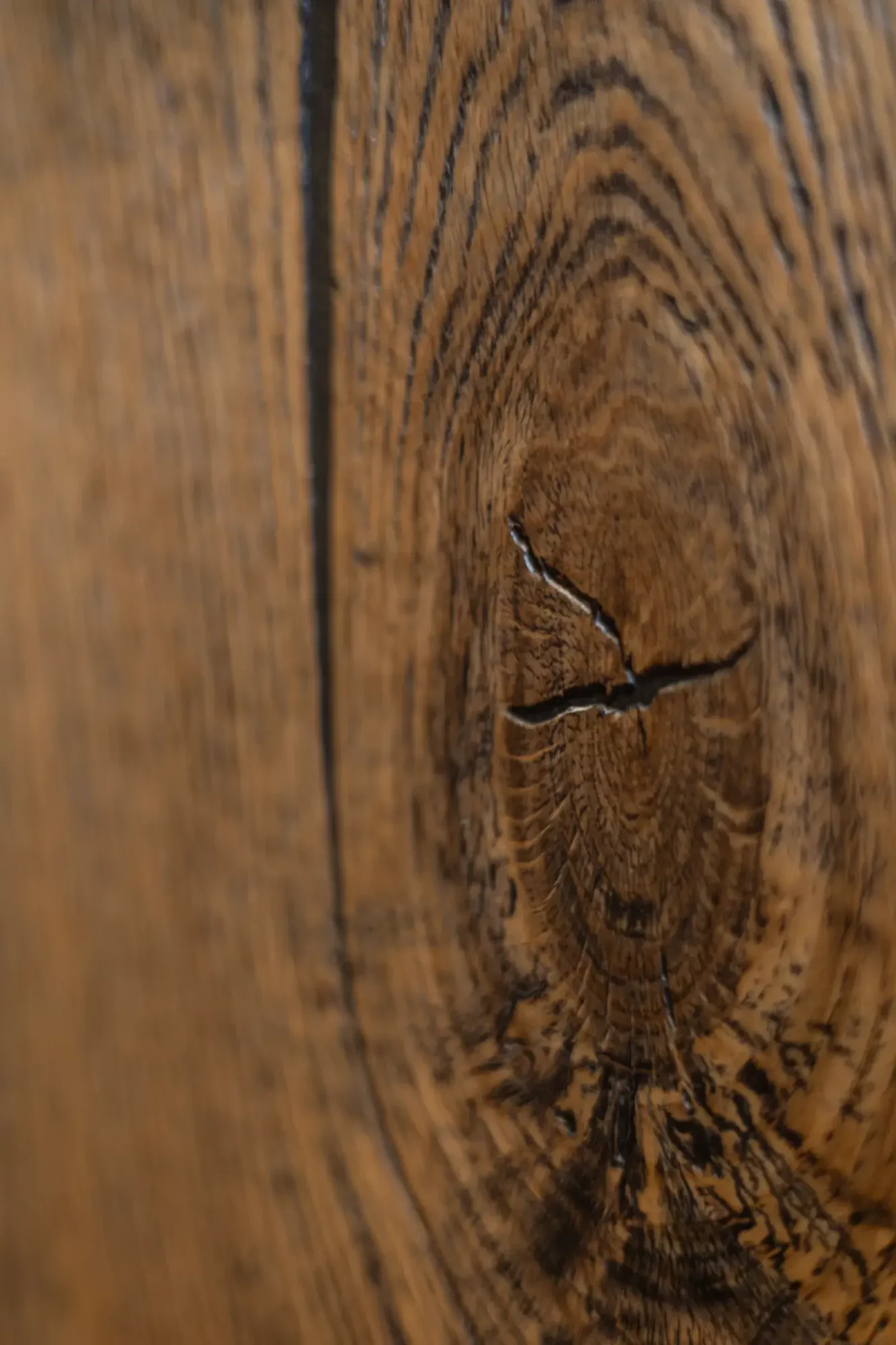
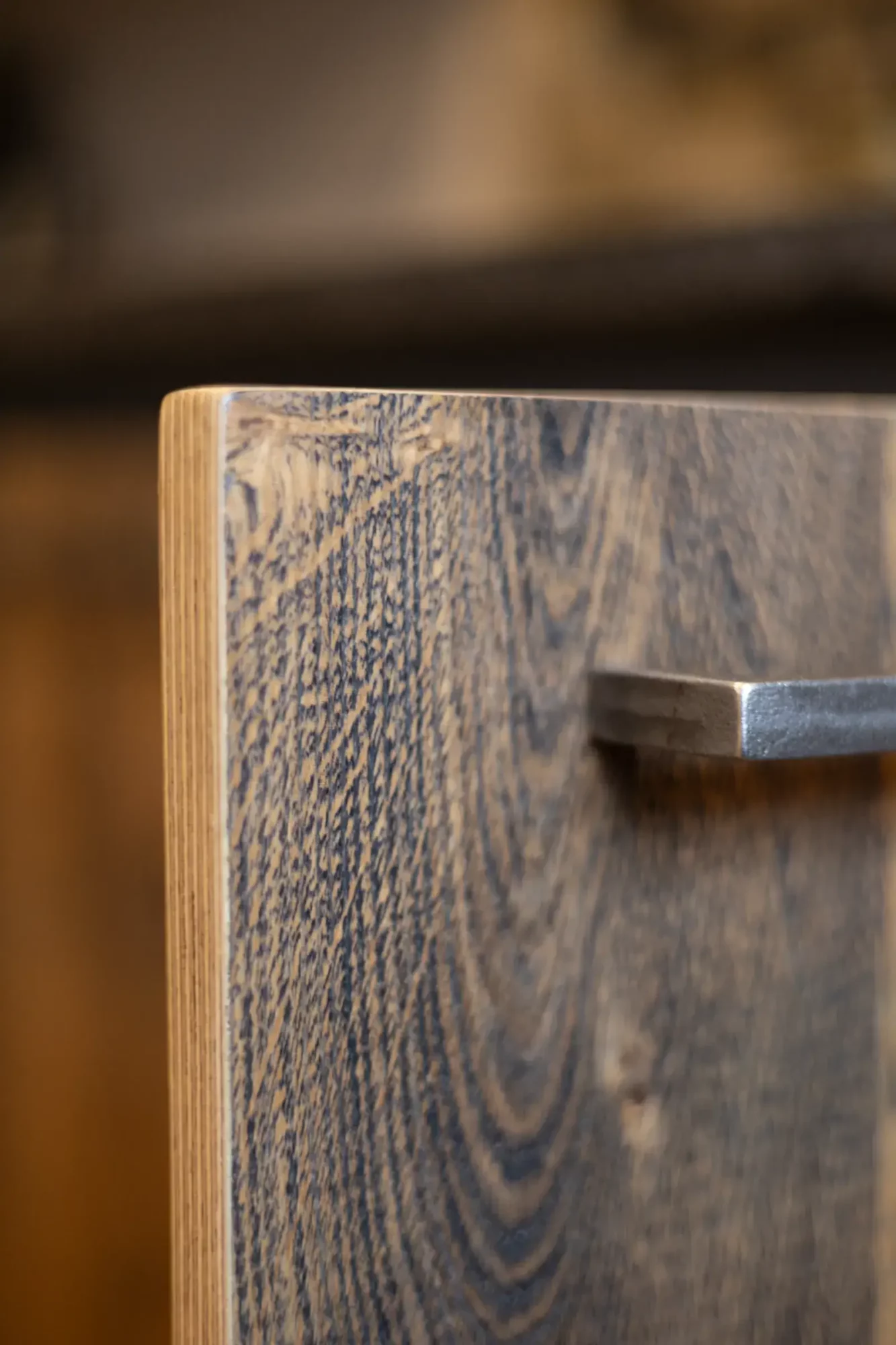
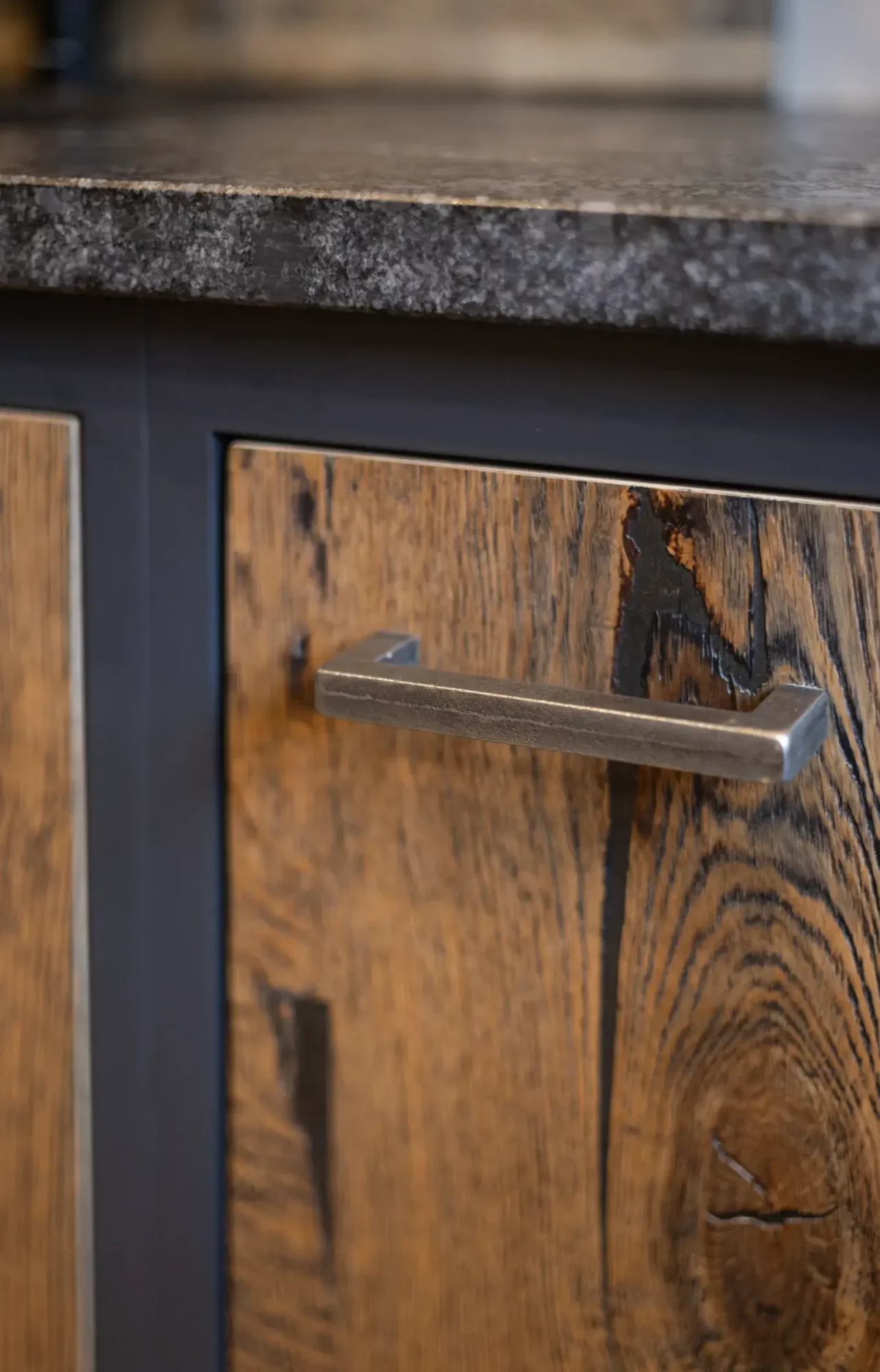
Often stained in a mid-tone walnut finish, cabinets in an industrial kitchen can also be stained in a rich black for depth, or whitewashed for a coastal look.
Metallic Accents
Gunmetal grey or matte black metal accents give the kitchen a cool element that traditional polished chrome can’t provide. ‘Railings’ grey frames give our Malton kitchen symmetrical functionality while also acting as a stylistic design aspect. The cool metal tone contrasts with the warmth of the distressed wood to give it a balanced feel.
Incorporate metal accents in your lighting, cabinetry hardware, and furniture to add repeating elements that make the use of a finish feel intentional. Try adding long handles without any embellishments to pair perfectly with flat front cabinet doors, or black matte pendants for additional lighting.
Clean Lines
The industrial aesthetic is dominated by clean lines, without extra detail or decorative accents.
Industrial kitchens are often angular, and do not incorporate organic soft lines. Symmetry, parallel lines, and uninterrupted seamless work areas take priority in the design stage. This results in the space feeling open and uncluttered.
Complementary Design
To maximise your industrial kitchen aesthetic, incorporate intentional accents and finishes. Prioritise dark, flat, or matte finishes and keep things clean and simple.
Lighting
Kitchen lighting needs to be versatile and should incorporate ambient, task, and ceiling lights.
Create effective task lighting with metal pendants over your kitchen island in an oil-rubbed bronze or matte black finish. Avoid glass or chrome shades, and use Edison bulbs for an additional industrial touch. Do the same over your kitchen sink with a semi-flush or single pendant light. Undercounter LED lighting acts as ambient and task lighting, depending on the time of day.
Exposed Shelving
Both functional and stylish, exposed shelving is another opportunity to bring in distressed or rustic wood to your industrial kitchen. Opt for a live-edge shelf to infuse some additional texture, and contrast to the clean lines that dominate. Install floating shelves without brackets, or incorporate rustic metal corbels to mimic the finishes throughout the space.
Worktops
While budget and lifestyle will be two of the main drivers of choosing your worktops, there are multiple options that suit an industrial kitchen.
Concrete worktops are an obvious choice due to their flat finish and muted tones. While they are durable, they do need regular maintenance and need to be sealed as they are porous. They are a heat-resistant cost-effective option that can be customised to your liking.
Leathered or honed stone worktops are excellent choices for an industrial kitchen. While they both offer a matte finish, a leathered worktop undergoes an additional brushing step to add texture.
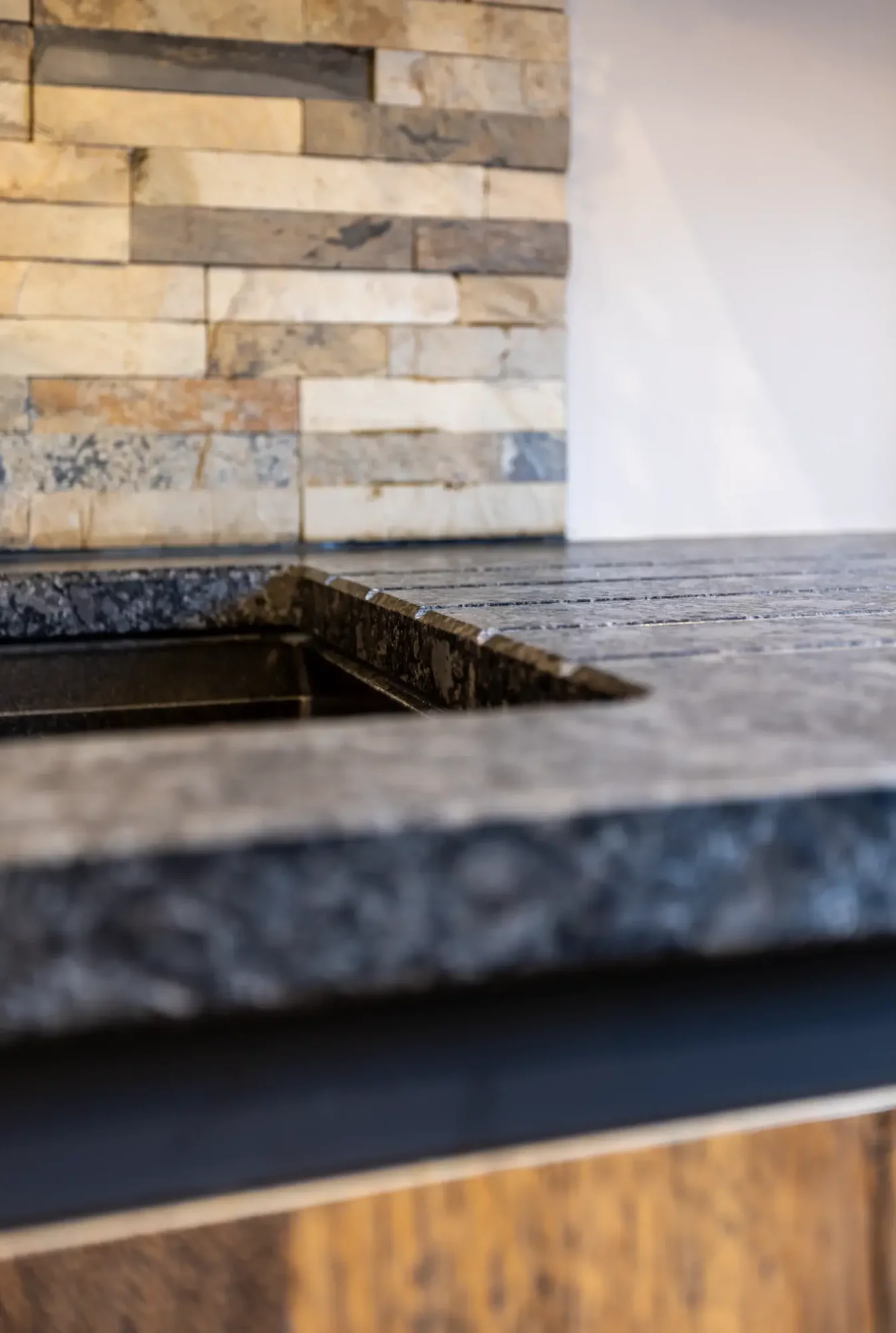
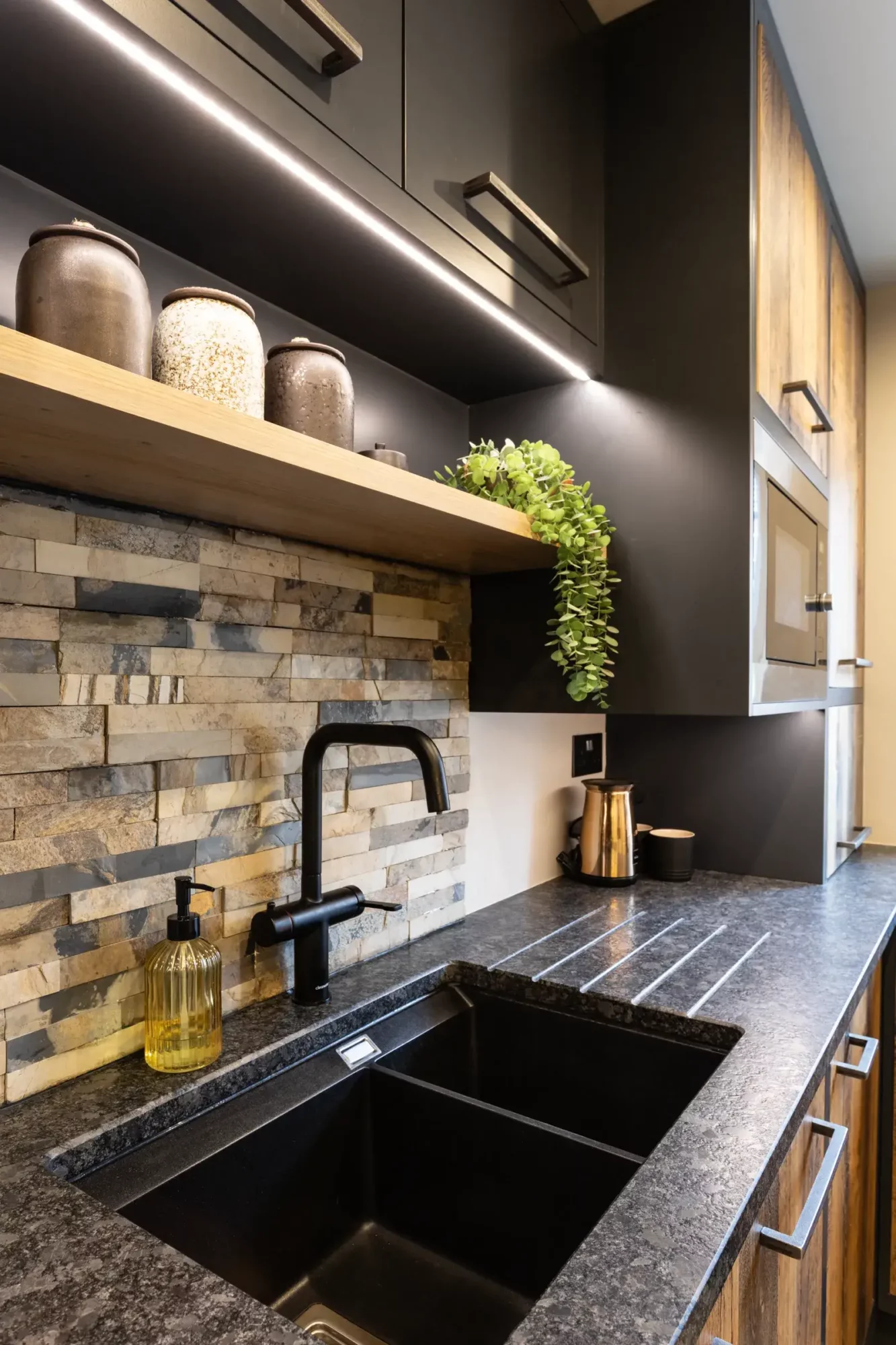
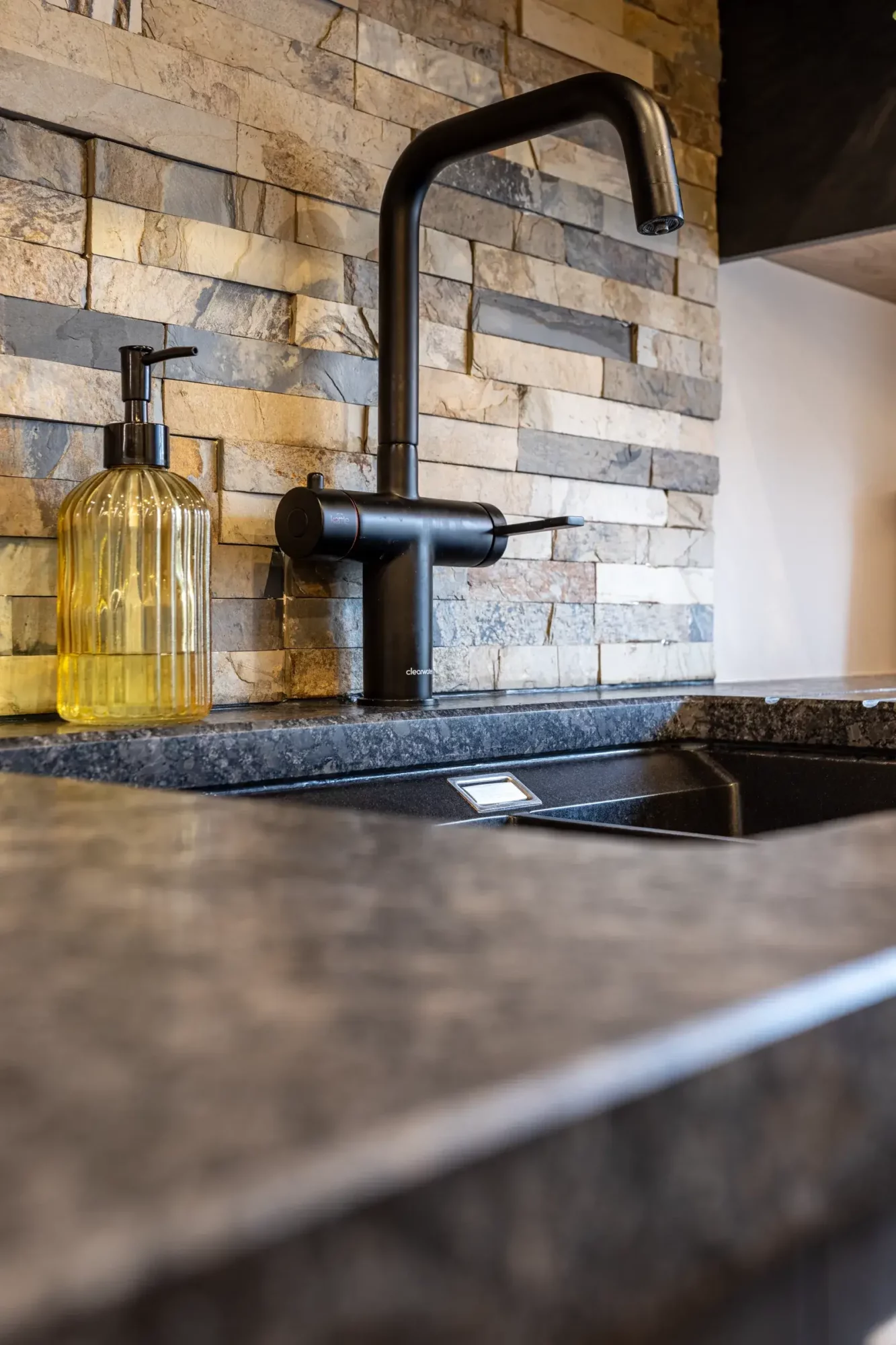
Finishing Touches
Use the finishes in your industrial kitchen as a jumping-off point when accessorising your space. Bring in cognac leather stools, rough-hewn serving pieces, and modern art to add some personality to the kitchen. Be selective with your choices and you’ll end up with a kitchen design that feels layered and tailored to you and your family.
Creating an Efficient Industrial Kitchen
Kitchen design needs to prioritise the way it’s used even more than the way it looks.
Prioritising Use vs Looks
When designing an industrial kitchen, it’s integral to maximize the space by designing a functional layout. While this will look different for each homeowner, all kitchens need to consider the kitchen’s work triangle. This is the path you take between the fridge, range, and sink. Make sure that there is ample walking space, particularly around kitchen islands.
Smart Storage
While we often think the more storage the better, we want to prioritise the quality of storage over just the quantity. Whether you need small appliance storage, shelves for your cake stands, or dry storage for your garden’s root vegetables, it can all be incorporated. When designing a new kitchen, take the time to declutter so you can free yourself from dusty pieces that haven’t been reached for in years.
Industrial kitchens offer a rustic elegance that invites conversation and welcomes visitors into your space. The approachable vibe ensures that the space isn’t seen as stuffy and that it’s meant to be used, shared, and enjoyed. For more inspiration on industrial kitchen design, browse through our recent Malton project, where we got to incorporate much of the above, as well as a custom-designed breakfast bar and integrated appliances.


